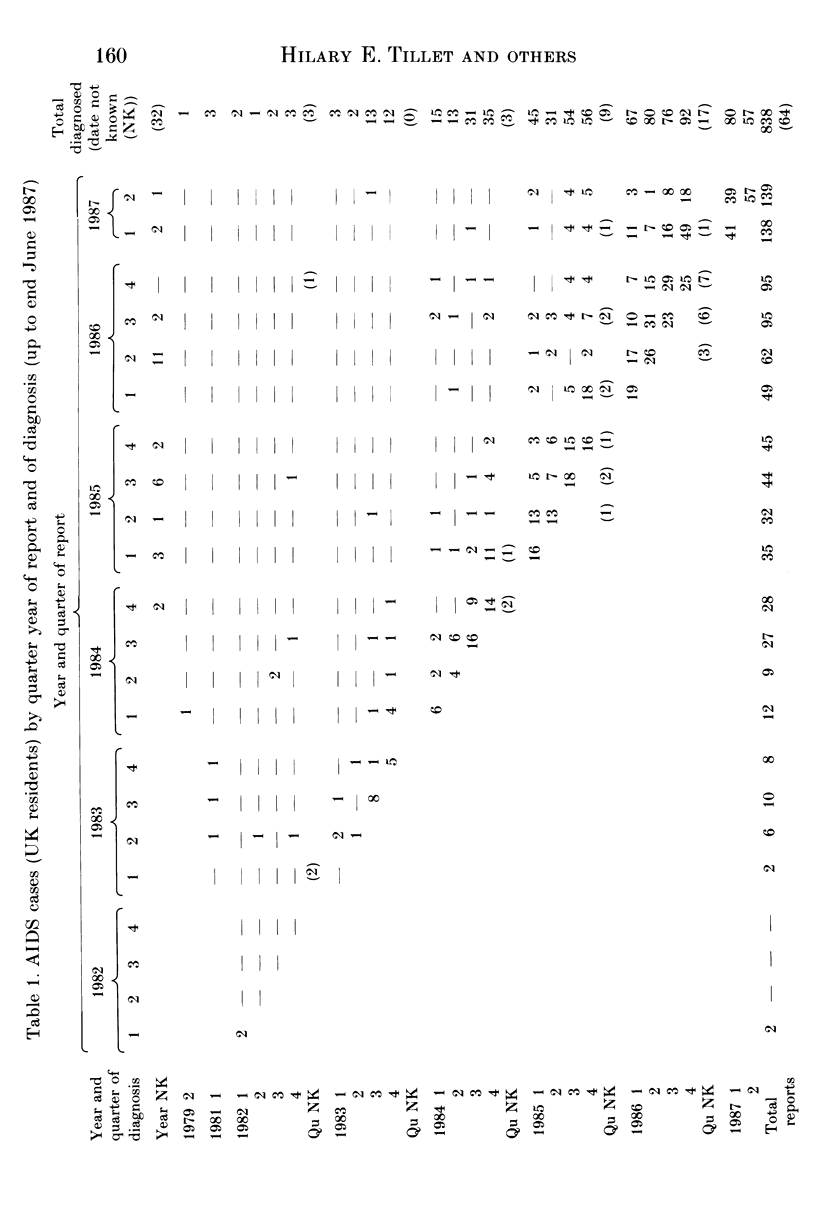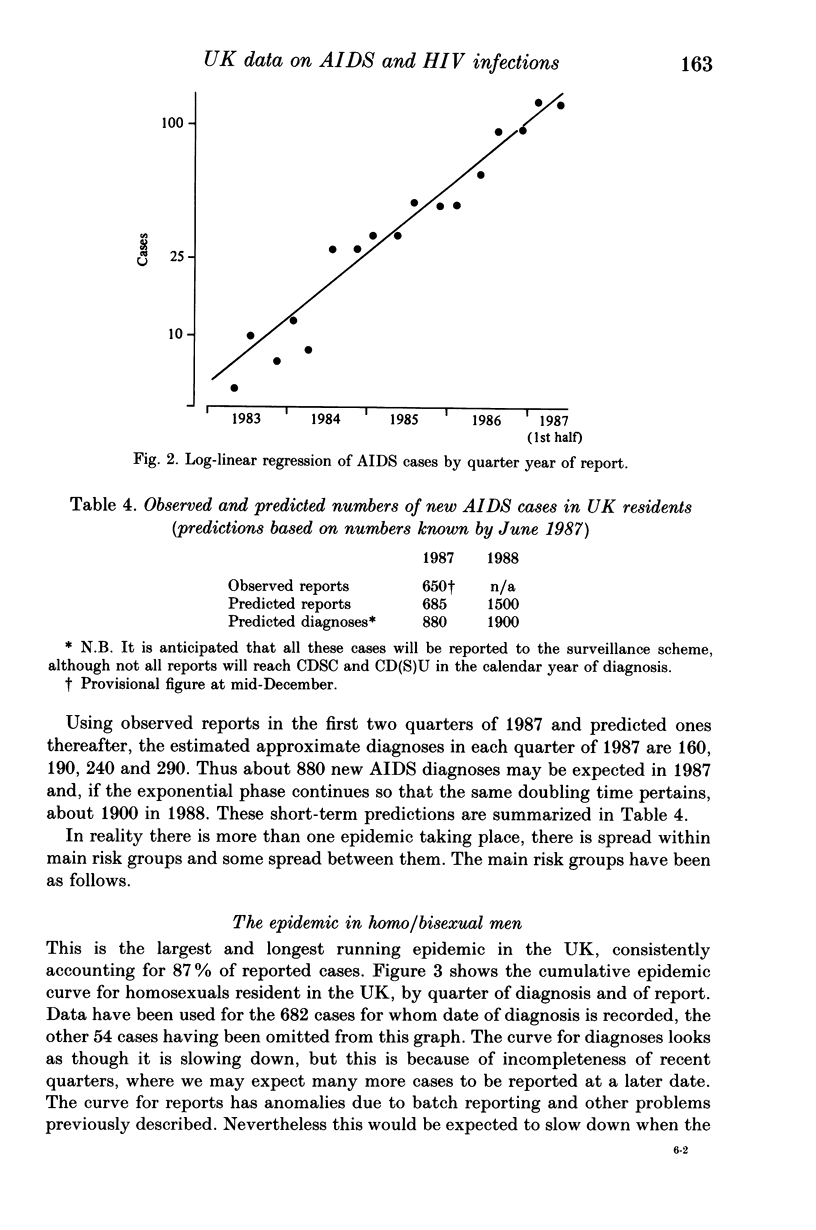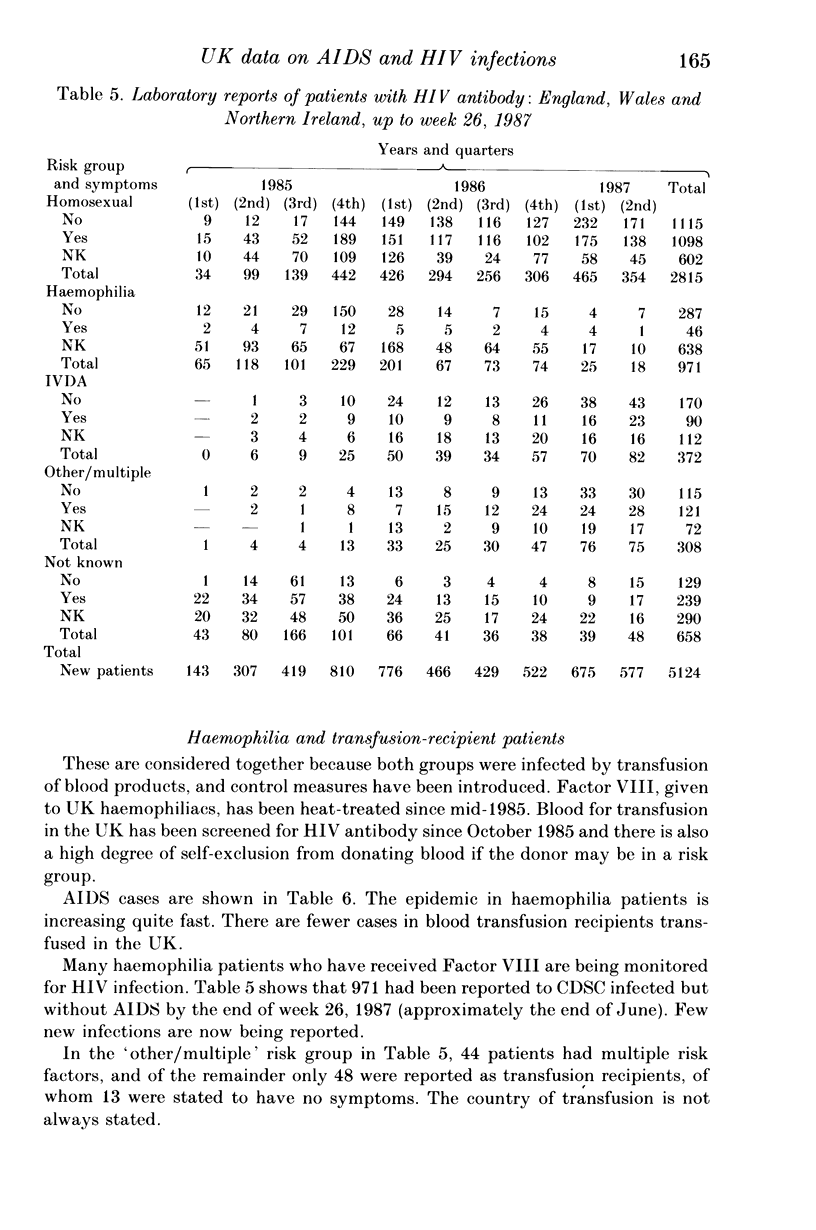Abstract
In the UK surveillance of AIDS and HIV infection is based on routine reporting systems. Whilst attempts are made to ensure that AIDS data are as complete as possible, numbers of reports fluctuate from month to month for reasons which are described. In 1986 there was an increase in death certificates naming AIDS as a cause of death in patients who were not identifiable in the surveillance data. More active surveillance is now undertaken in order to minimize this and other possible discrepancies. It is probable that most cases of AIDS are reported and therefore these data can be used to describe trends in the epidemic by 'risk group'. Laboratory reports of HIV antibody-positive tests could give an earlier indication of trends because of the long incubation period of AIDS. But these laboratory data are difficult to interpret because they represent an incomplete and biased sample of all positive persons. AIDS cases are still being reported at a rate which is increasing approximately exponentially. Short-term predictions are presented showing a growth in the epidemic which is consistent with previously published predictions. Most cases are in the homosexual risk group. New asymptomatic homosexual patients with HIV antibody are still being identified. The epidemic of AIDS in haemophilia patients should be of finite size although new cases of AIDS are likely to continue to be diagnosed for several years. AIDS due to blood transfusion given in the UK before donor screening appears to be a much smaller epidemic. The epidemic in drug abusers is increasing. Heterosexually acquired AIDS and HIV infections are being reported in small but increasing numbers.
Full text
PDF












Selected References
These references are in PubMed. This may not be the complete list of references from this article.
- Anderson R. M., Medley G. F., May R. M., Johnson A. M. A preliminary study of the transmission dynamics of the human immunodeficiency virus (HIV), the causative agent of AIDS. IMA J Math Appl Med Biol. 1986;3(4):229–263. doi: 10.1093/imammb/3.4.229. [DOI] [PubMed] [Google Scholar]
- Galbraith N. S., McEvoy M., Sibellas M. The acquired immune deficiency syndrome--1985. Community Med. 1986 Nov;8(4):329–336. [PubMed] [Google Scholar]
- Knox E. G. A transmission model for AIDS. Eur J Epidemiol. 1986 Sep;2(3):165–177. doi: 10.1007/BF00211527. [DOI] [PubMed] [Google Scholar]
- Robertson J. R. Drug users in contact with general practice. Br Med J (Clin Res Ed) 1985 Jan 5;290(6461):34–35. doi: 10.1136/bmj.290.6461.34. [DOI] [PMC free article] [PubMed] [Google Scholar]
- Tillett H. E., McEvoy M. Reassessment of predicted numbers of AIDS cases in the UK. Lancet. 1986 Nov 8;2(8515):1104–1104. doi: 10.1016/s0140-6736(86)90509-x. [DOI] [PubMed] [Google Scholar]
- van Druten J. A., de Boo T., Jager J. C., Heisterkamp S. H., Coutinho R. A., Ruitenberg E. J. AIDS prediction and intervention. Lancet. 1986 Apr 12;1(8485):852–853. doi: 10.1016/s0140-6736(86)90957-8. [DOI] [PubMed] [Google Scholar]


